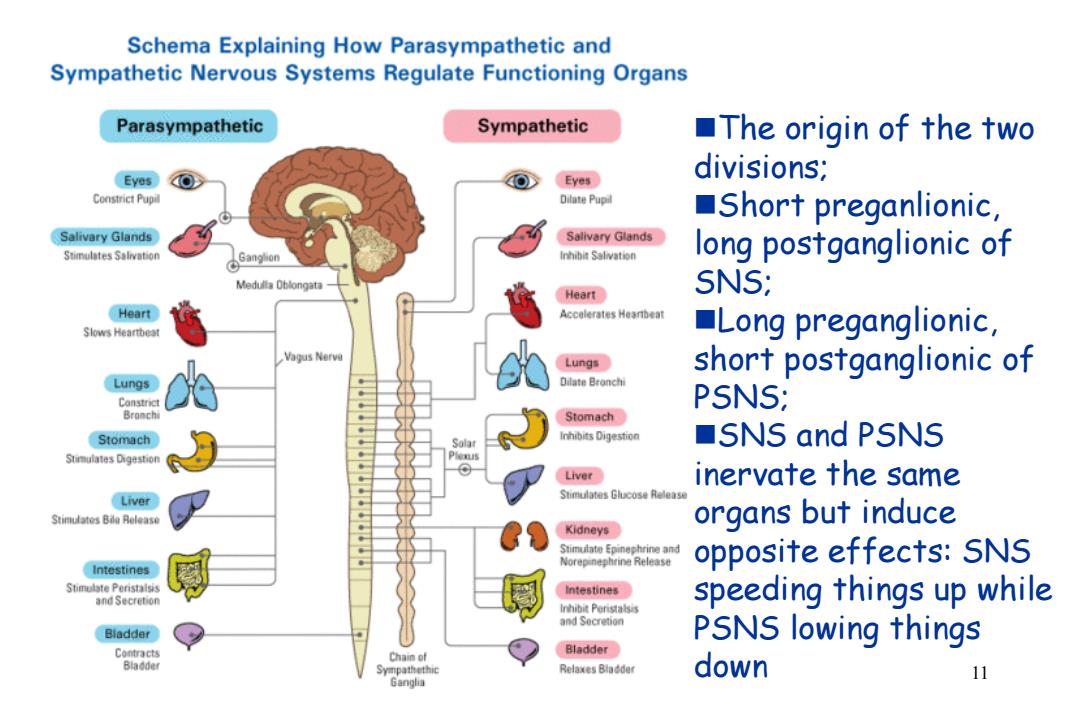
Schema Explaining How Parasympathetic and Sympathetic Nervous Systems Regulate Functioning Organs Parasympathetic Sympathetic ■The origin of the two Eyes O Eyes divisions; Constrict Pupil Ditate Pupd ■Short preganlionic, Salivary Glands Salivary Glands Stimulates Salrvation Inhibit Salivation long postganglionic of Medulla Oblongata Heart SNS; Heart Accelerates Heanbeat Slows Heartbeat Long preganglionic Vagus Nerva Lungs short postganglionic of Lungs Dilate Bronchi Constrict PSNS; Bronchi Stomach Stomach Inhibits Digestion ■SNS and PSNS Stirmulates Digestion Liver inervate the same Liver Stimulates Glcose Release Stimlates Bde Release organs but induce Kidneys Stimulate Epinephrine and Norepinephtine Release opposite effects:SNS Intestines Stimulate Peristalsis Intestines and Secretion speeding things up while inhibit Peristalsis and Secretion Bladder PSNS lowing things Contracts Chain of Bladder Bladder Sympathethic Relaxes Biadder down 11 Gangha
11 The origin of the two divisions; Short preganlionic, long postganglionic of SNS; Long preganglionic, short postganglionic of PSNS; SNS and PSNS inervate the same organs but induce opposite effects: SNS speeding things up while PSNS lowing things down
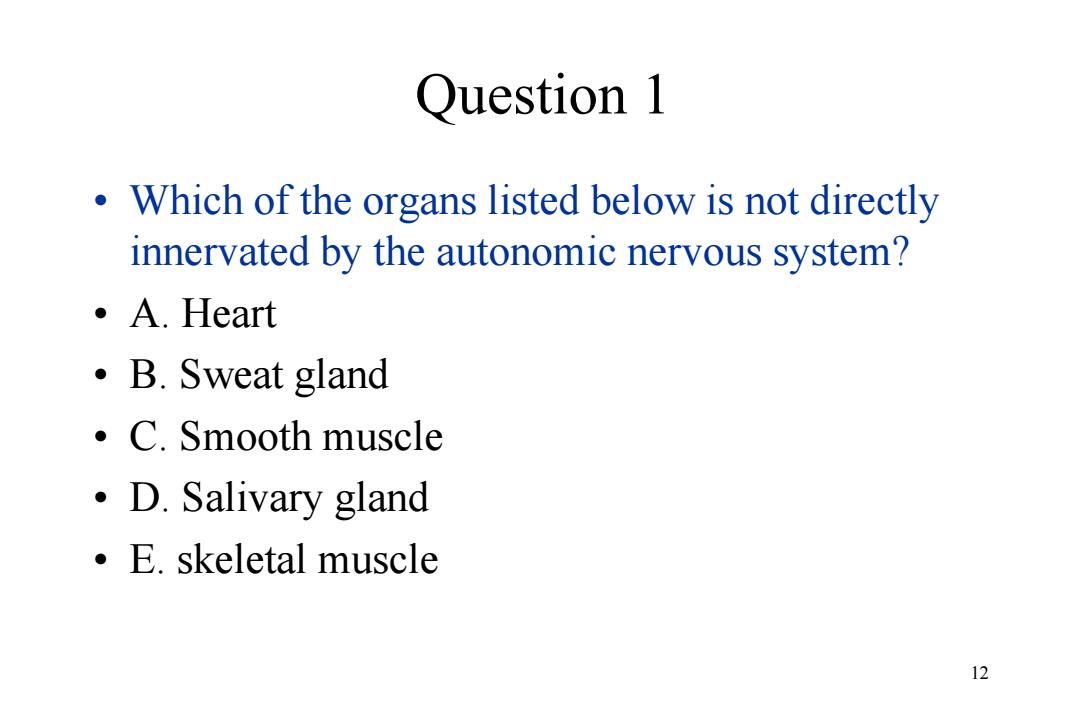
Question 1 Which of the organs listed below is not directly innervated by the autonomic nervous system? ·A.Heart ·B.Sweat gland ·C.Smooth muscle ·D.Salivary gland ·E.skeletal muscle 12
Question 1 • Which of the organs listed below is not directly innervated by the autonomic nervous system? • A. Heart • B. Sweat gland • C. Smooth muscle • D. Salivary gland • E. skeletal muscle 12
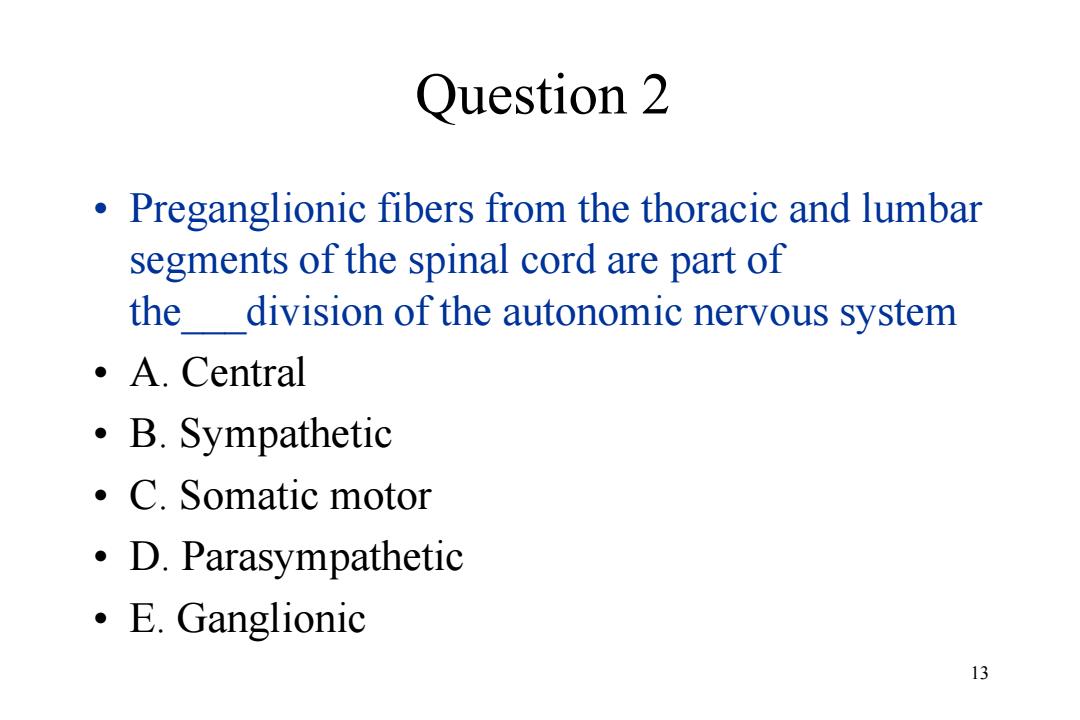
Question 2 Preganglionic fibers from the thoracic and lumbar segments of the spinal cord are part of the division of the autonomic nervous system ·A.Central 。B.Sympathetic ·C.Somatic motor ·D.Parasympathetic 。E.Ganglionic 13
Question 2 • Preganglionic fibers from the thoracic and lumbar segments of the spinal cord are part of the___division of the autonomic nervous system • A. Central • B. Sympathetic • C. Somatic motor • D. Parasympathetic • E. Ganglionic 13
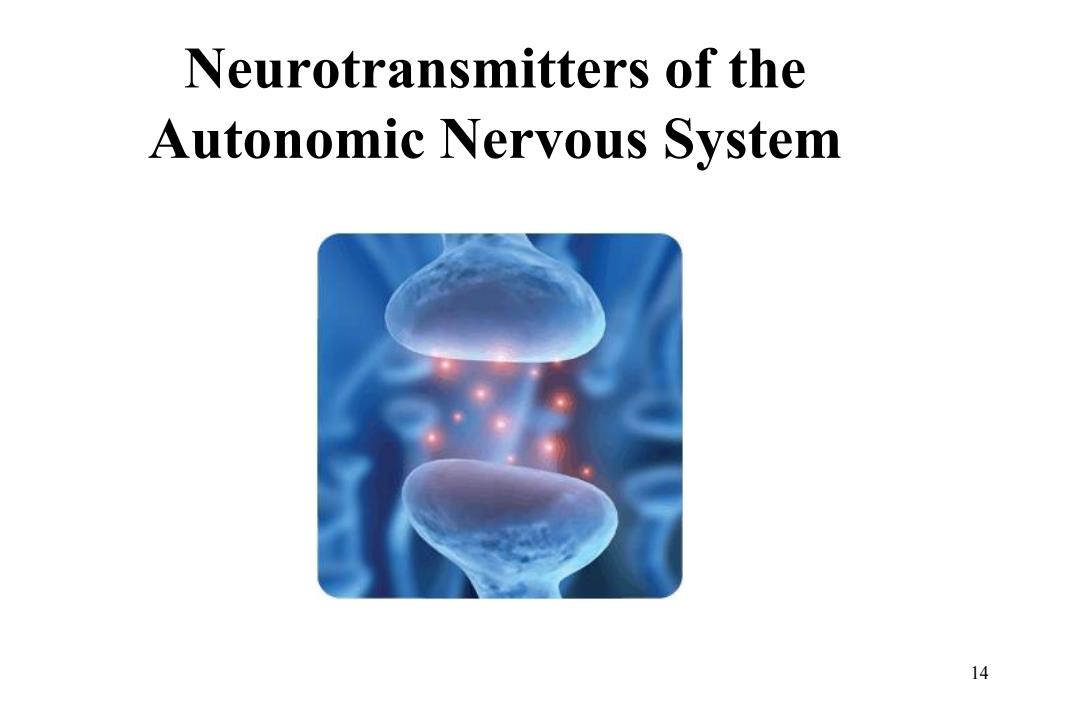
Neurotransmitters of the Autonomic Nervous System 14
Neurotransmitters of the Autonomic Nervous System 14
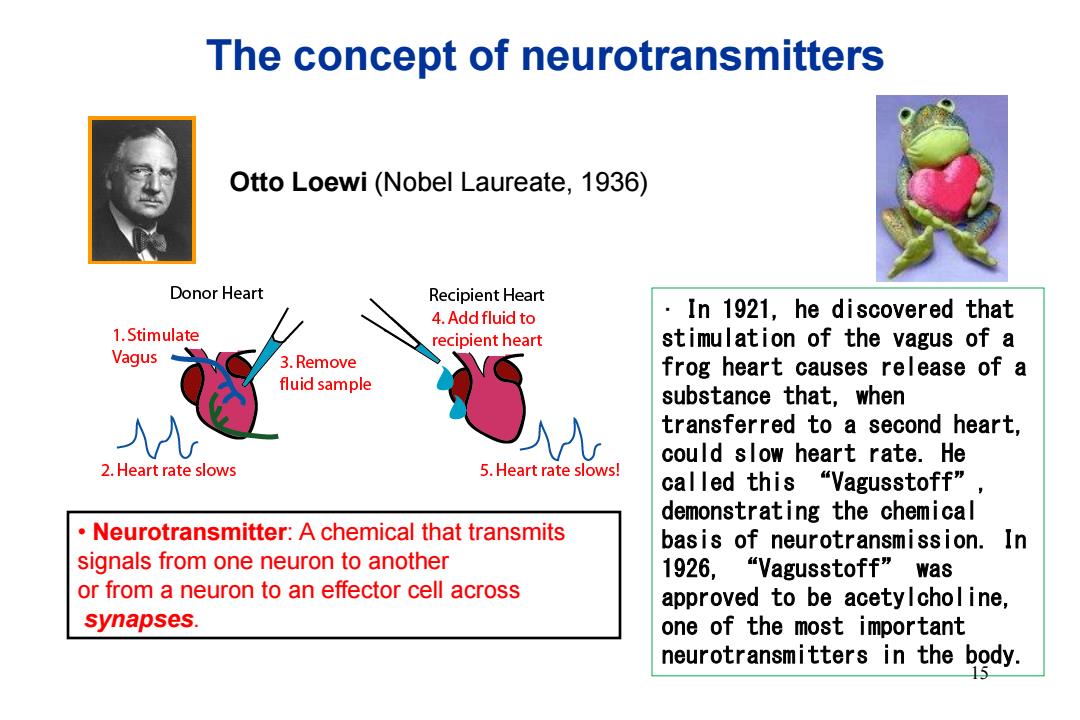
The concept of neurotransmitters Otto Loewi(Nobel Laureate,1936) Donor Heart Recipient Heart 4.Add fluid to In 1921,he discovered that 1.Stimulate recipient heart stimulation of the vagus of a Vagus 3.Remove frog heart causes release of a fluid sample substance that,when transferred to a second heart, could slow heart rate.He 2.Heart rate slows 5.Heart rate slows! cal led this "Vagusstoff" demonstrating the chemical Neurotransmitter:A chemical that transmits basis of neurotransmission.In signals from one neuron to another 1926,“Vagusstoff”was or from a neuron to an effector cell across approved to be acetylchol ine, synapses. one of the most important neurotransmitters in the body
• In 1921, he discovered that stimulation of the vagus of a frog heart causes release of a substance that, when transferred to a second heart, could slow heart rate. He called this “Vagusstoff”, demonstrating the chemical basis of neurotransmission. In 1926, “Vagusstoff” was approved to be acetylcholine, one of the most important neurotransmitters in the body. Otto Loewi (Nobel Laureate, 1936) The concept of neurotransmitters • Neurotransmitter: A chemical that transmits signals from one neuron to another or from a neuron to an effector cell across synapses. 15